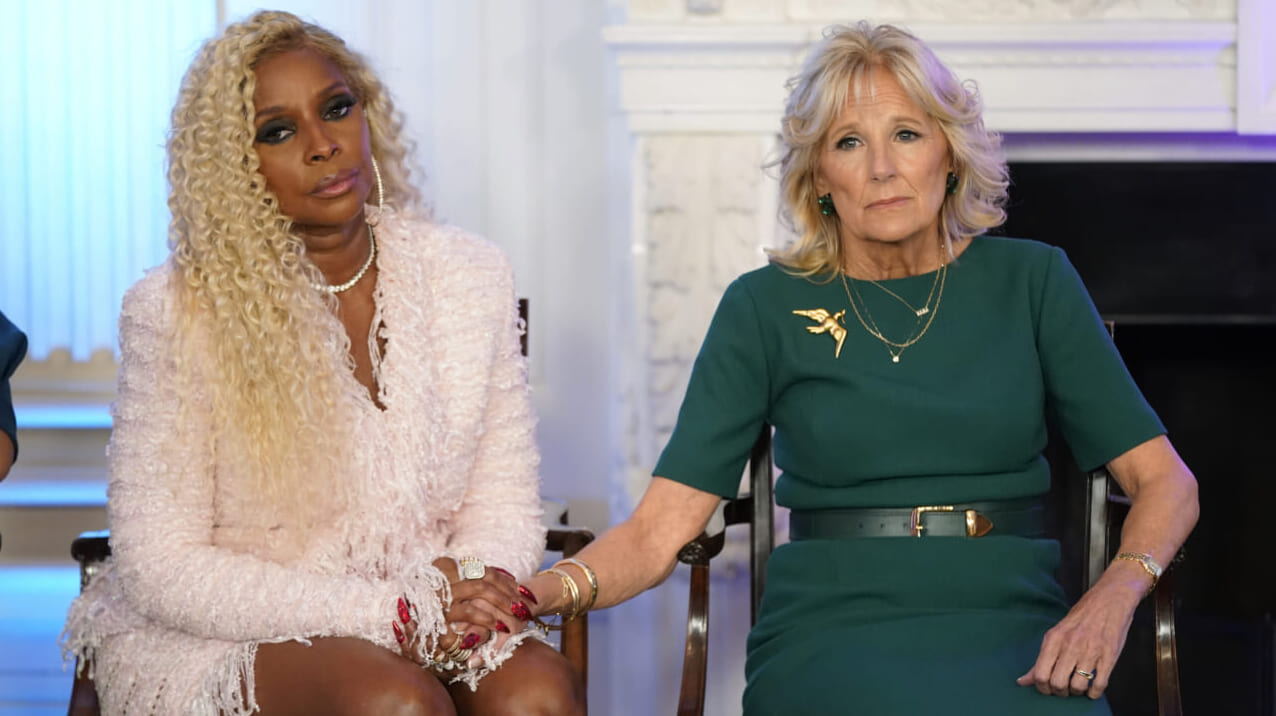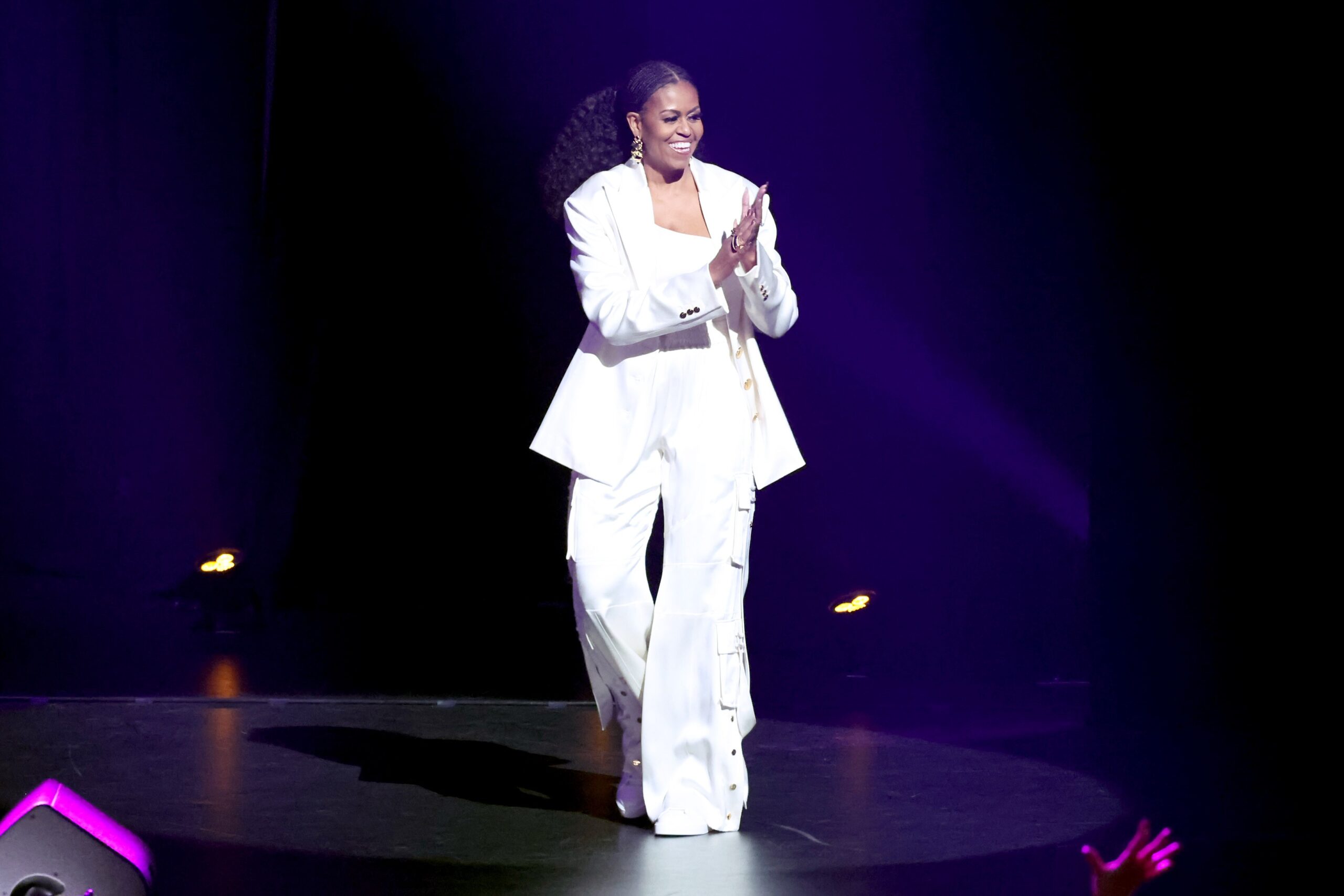Namibia President Hage Geingob, dancers welcome Jill Biden at first stop of Africa tour
The United States has fallen well behind China in investment in sub-Saharan Africa, which has become a key battleground in an increasingly fraught competition between the major powers
WINDHOEK, Namibia (AP) — Dancers, drummers and Namibia’s president and first lady welcomed U.S. first lady Jill Biden on Wednesday as she opened a five-day, two-country visit to Africa aimed at highlighting the challenges facing women and young people and the food insecurity plaguing the Horn of Africa.
After flying all night, the first lady was feted at the airport by members of some of Namibia’s ethnic groups — clad in red, white and blue, or bright pink — who greeted her with singing, dancing, drumming and ululating. The last high-level U.S. official to visit was Vice President Al Gore in 1996, the White House said.
The first lady’s trip is part of a commitment by President Joe Biden to deepen U.S. engagement with the fast-growing region. The United States has fallen well behind China in investment in sub-Saharan Africa, which has become a key battleground in an increasingly fraught competition between the major powers.
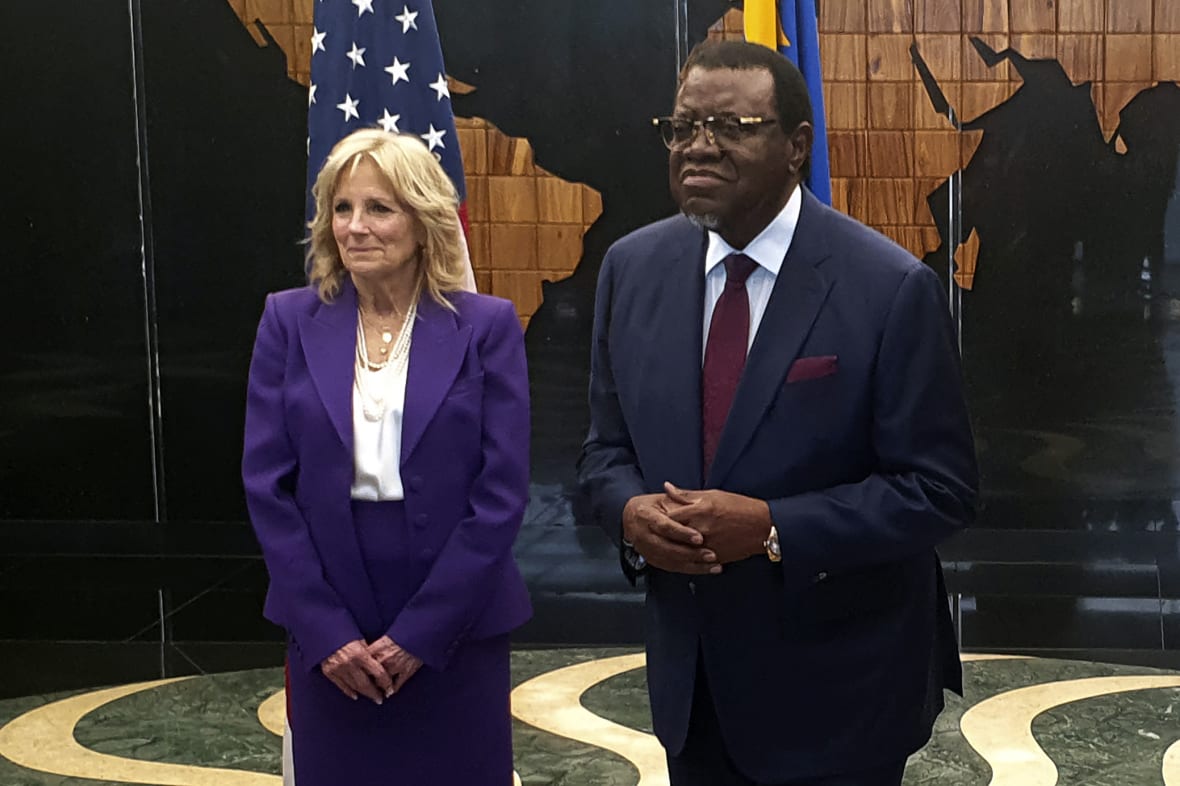
Jill Biden and Monica Geingos, Namibia’s first lady, embraced on the tarmac before Biden greeted U.S and Namibian diplomatic and government officials. The two first met in December, when dozens of African leaders flew to Washington for a summit hosted by President Biden.
After leaving the airport, Jill Biden was driven 45 minutes south of Windhoek, the capital, to lay a wreath at Heroes’ Acre, Namibia’s official war memorial. She later met with President Hage Geingob and his wife at the State House, where her arrival was heralded with more singing and dancing.
It’s Jill Biden’s sixth time in Africa, but her first trip as first lady. She is following in the footsteps of her recent predecessors, who all made the trip across the Atlantic Ocean in the name of trying to help foster goodwill toward the United States.
“We have a lot to accomplish,” she said Tuesday before departing Washington.
Africa is the fastest-growing and youngest region in the world, according to the White House, which says 1 of every 4 people in the world will be African by 2050.
Jill Biden previously visited Africa in 2010, 2011, twice in 2014 and once in 2016, all during her husband’s service as U.S. vice president. Two of those trips were with him.
This time, she is traveling to Africa without the president, who was wrapping up a trip to Poland to mark Friday’s anniversary of Russia’s aggression toward Ukraine. She brought along her granddaughter Naomi Biden.
Patricia Nixon was the first first lady to travel to Africa on her own. She went as President Richard Nixon’s “personal representative” to Liberia, Ghana and the Ivory Coast in 1972. She addressed legislative bodies and met with African leaders about U.S. policy toward the country now known as Zimbabwe, and human rights in South Africa, according to the National First Ladies’ Library.
What recent first ladies did on their visits to Africa:
Melania Trump
Mrs. Trump visited for the first time in 2018, when she spent five days as first lady stopping in Ghana, Malawi, Kenya and Egypt to promote U.S. developmental aid and education, cradle babies and highlight animal and historic preservation.
She traveled without President Donald Trump, who had denied making disparaging comments about African countries.
She opened the trip at an infant clinic in Ghana. She also learned about Africa’s slave past during a tour of Cape Coast Castle, a former slave holding facility on the Ghanaian coast. She spent time inside the cramped dungeon once used to house male slaves and walked through the “Door of No Return,” from which the slaves were shipped to the New World.
In Malawi, the former model toured indoor and outdoor classrooms, observed lessons and watched students play soccer with U.S.-donated balls. She highlighted elephant preservation at Nairobi National Park in Kenya. She closed the tour in Egypt by touring the pyramids and the Great Sphinx to highlight U.S.-supported preservation efforts there.
Michelle Obama
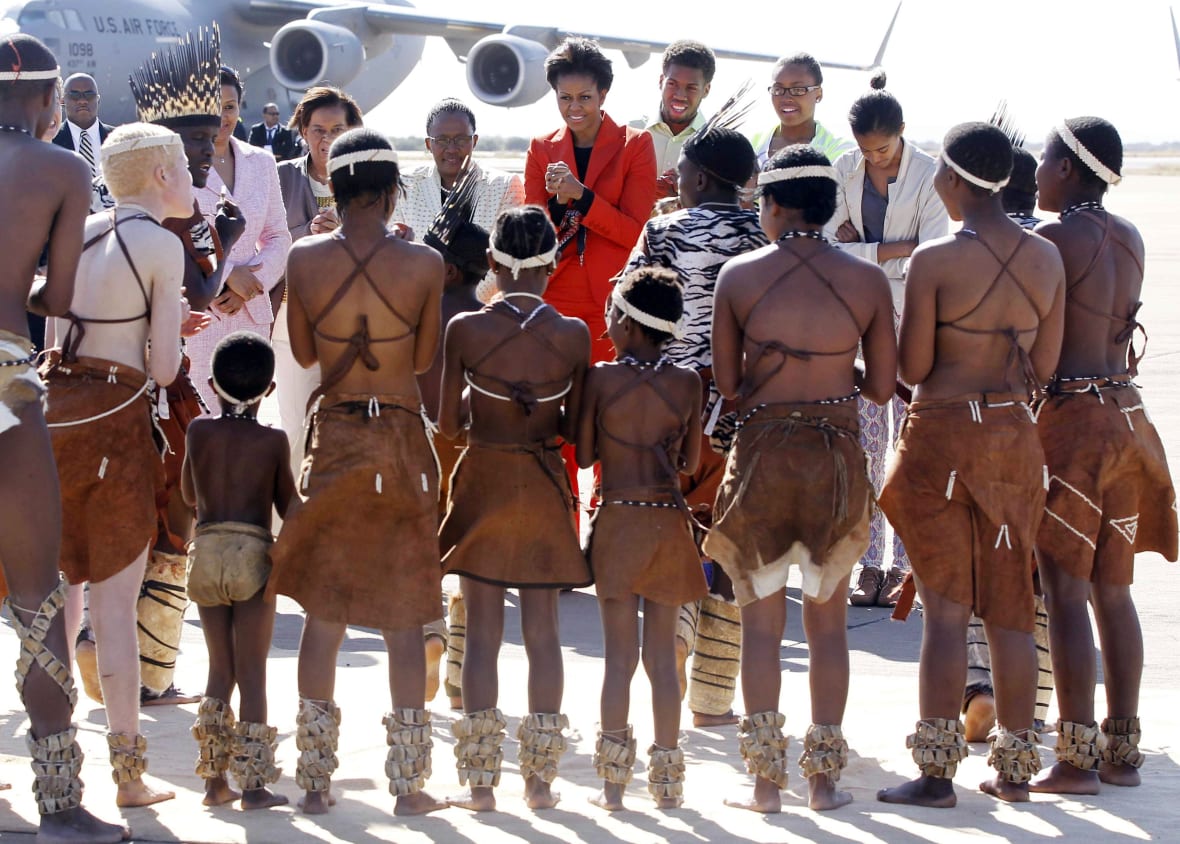
Mrs. Obama went to South Africa and Botswana on a goodwill mission in the summer of 2011 to promote youth leadership, education and HIV and AIDS awareness.
The centerpiece of the weeklong trip by America’s first Black first lady was a 30-minute speech at a U.S.-sponsored leadership conference at a church in Soweto township. THe church became a popular refuge during the South African people’s fight against apartheid, the now-abolished system of government-imposed segregation.
She was accompanied by her daughters, Malia and Sasha; her mother, Marian Robinson; and a niece and nephew. Mrs. Obama also took her daughters to visit with former South African President Nelson Mandela at his home.
Mrs. Obama made a second solo visit to Africa in June 2016, the final year of the Obama administration. In Liberia and Morocco, she promoted her “Let Girls Learn” initiative to encourage developing countries to educate girls.
She also visited Ghana with President Barack Obama in 2009, his first year in office.
Laura Bush
Mrs. Bush traveled to Africa five times on her own between 2005 and 2007 during President George W. Bush’s second term, in addition to two trips she took with him.
Her trips mostly focused on promoting the administration’s efforts to combat the spread of HIV, as well as malaria. She also emphasized literacy, drug prevention and national parks. During one stop in South Africa, she praised HIV-positive mothers for working to erase the stigma associated with the disease. She spoke openly with African women about taking control of their sex lives.
Mrs. Bush also announced millions of dollars in U.S. funding for programs to stem the spread of AIDS and mosquito-borne malaria. In Mozambique, she covered her face with a white mask to help illustrate the benefits of spraying homes with insecticides to combat malaria. She also passed out mosquito nets.
She was accompanied on these trips by one or both of her twin daughters, Barbara and Jenna.
Hillary Clinton
Hillary Clinton took along her 17-year-old daughter, Chelsea, on her two-week visit in March 1997 to Senegal, South Africa, Zimbabwe, Tanzania, Uganda and Eritrea.
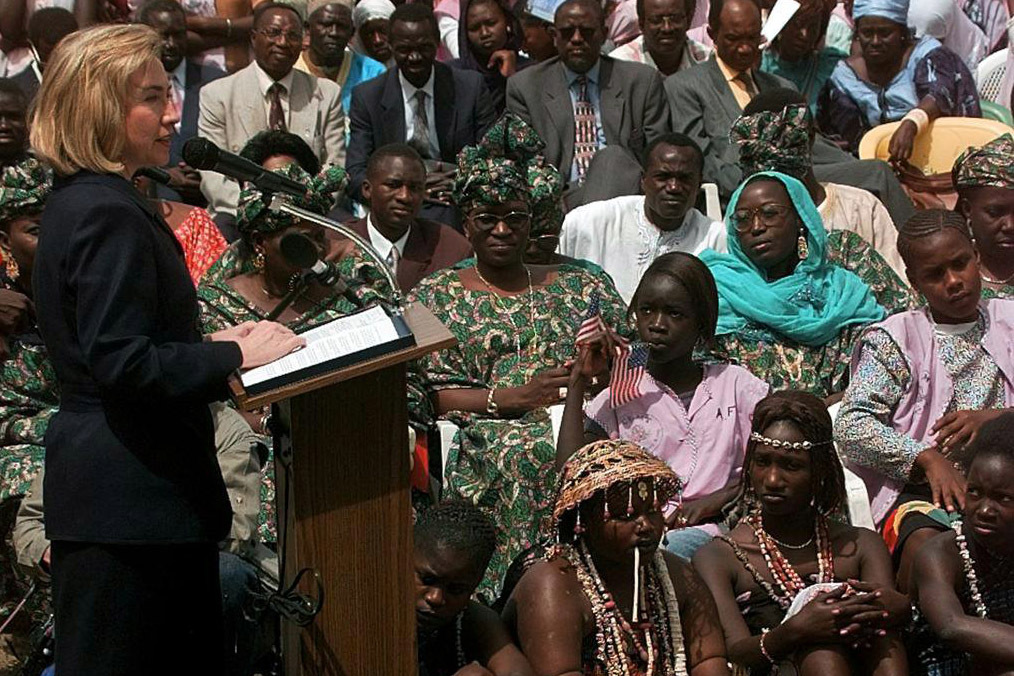
The first lady opened her journey at Goree Island in Senegal, a hub for the Atlantic slave trade for 300 years. Mrs. Clinton had said she wanted to see the island because of its significance to Black Americans. She discussed violent crime in South Africa, along with the need to improve education for Black people in a country that recently had abolished its apartheid policy of racial segregation.
Mrs. Clinton returned in 1998 when President Bill Clinton made his first visit to Africa; it was also the first visit to the continent by a U.S. president in 20 years.
The White House billed the 12-day tour of Ghana, Rwanda, Uganda, South Africa, Botswana and Senegal as a way to encourage trade and investment in Africa.
TheGrio is now on your TV via Apple TV, Amazon Fire, Roku, and Android TV. Also, please download theGrio mobile apps today!
